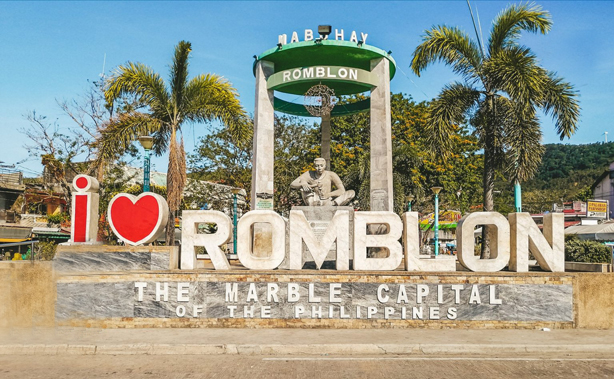In the heart of the Philippines lies Romblon, a province steeped in natural beauty and cultural traditions that have withstood the test of time. Among its most fascinating legacies is the continued use of ancient herbal practices by the island’s elders—practices often whispered about as “witchcraft.” Far from the spooky stereotypes, these traditions are a blend of indigenous wisdom, herbal mastery, and a deep connection to the land. So why do Romblon’s elders cling to these age-old methods in a world dominated by modern medicine? Let’s dive into the roots of this captivating practice and uncover its enduring relevance.
The Roots of Romblon’s Herbal Traditions
Romblon’s herbal “witchcraft” isn’t about casting spells or brewing potions in cauldrons—at least, not in the Hollywood sense. Instead, it’s a sophisticated system of healing passed down through generations, rooted in the animistic beliefs of precolonial Philippines. Before Spanish colonizers arrived in the 16th century, the people of Romblon relied on babaylans—spiritual leaders and healers who bridged the physical and spiritual worlds. These healers used plants, rituals, and intuition to treat ailments, a practice that blended seamlessly with the island’s lush biodiversity.
Today, the elders of Romblon—many of whom are descendants of these babaylans—continue to harness the power of local flora. From the leaves of the lagundi plant to the bark of the akapulko, these natural remedies are more than just folklore; they’re a living testament to a time when humans and nature were in harmony.
A Legacy Preserved Through Oral Tradition
Unlike modern medicine, which relies on written prescriptions and clinical trials, Romblon’s herbal knowledge is preserved through storytelling. Elders pass down recipes and techniques to their children and grandchildren, often in the form of chants or tales. This oral tradition ensures that the wisdom remains alive, even without formal documentation. It’s a system that’s as resilient as the people who practice it, adapting to the challenges of time while staying true to its origins.
Why Herbal “Witchcraft” Endures in Romblon
In an era of antibiotics and over-the-counter drugs, you might wonder why these ancient practices haven’t faded away. The answer lies in a combination of practicality, cultural pride, and a skepticism of modern alternatives. Let’s break it down:
- Accessibility: Romblon’s remote islands often lack pharmacies or hospitals. For many, the forest is the closest medicine cabinet, offering free and abundant resources.
- Affordability: Herbal remedies cost little to nothing, making them a lifeline for families who can’t afford expensive treatments.
- Trust in Tradition: Elders view these methods as proven by centuries of use, often more reliable than unfamiliar pharmaceuticals.
- Spiritual Connection: For many, healing isn’t just physical—it’s spiritual. Herbal rituals honor ancestors and nature spirits, reinforcing a sense of identity.
This blend of practicality and reverence keeps Romblon’s herbal “witchcraft” alive, even as the world around it modernizes.
The Science Behind the “Magic”
While the term “witchcraft” might evoke mystery, there’s real science behind these herbal practices. Many plants used by Romblon’s elders have been studied and validated by modern research. For example:
- Lagundi (Vitex negundo): Traditionally used for coughs and fevers, studies confirm its anti-inflammatory and antimicrobial properties.
- Akapulko (Cassia alata): Applied to skin infections, it’s now recognized for its antifungal and antibacterial effects.
- Sambong (Blumea balsamifera): A diuretic for kidney stones, it’s backed by research for its ability to dissolve urinary crystals.
These findings bridge the gap between ancient wisdom and contemporary science, proving that Romblon’s elders have been onto something all along.
Challenges Facing Romblon’s Herbal Healers
Despite its resilience, this ancient practice isn’t immune to modern pressures. The younger generation, lured by urban opportunities and Western medicine, is less interested in learning these traditions. Deforestation and climate change also threaten the availability of key plants, putting the future of this “witchcraft” at risk.
Elders worry that without effort to preserve this knowledge, it could vanish within a generation. Some have started teaching workshops or partnering with local herbalists to document their methods, but the clock is ticking.
The Role of Tourism and Globalization
Interestingly, tourism might offer a lifeline. Visitors to Romblon are increasingly fascinated by its cultural heritage, including its herbal traditions. This interest has sparked small initiatives to showcase these practices, from guided forest walks to demonstrations by local healers. While this could help preserve the knowledge, there’s a fine line between sharing and commodifying a sacred tradition.
How Romblon’s Elders Inspire Us Today
The persistence of herbal “witchcraft” in Romblon is more than a quirky footnote in history—it’s a lesson in sustainability and resilience. In a world grappling with over-reliance on synthetic drugs and environmental disconnection, these elders remind us of the power of nature’s pharmacy. Their practices challenge us to rethink our relationship with the earth and the wisdom of those who came before us.
For those inspired to explore this further, Romblon’s elders offer a glimpse into a way of life that’s both ancient and urgently relevant. Whether it’s brewing a tea from backyard herbs or simply appreciating the plants around us, there’s a little “witchcraft” we can all tap into.
Bridging the Past and Future
As we look to the future, the key lies in balance—honoring Romblon’s herbal traditions while integrating them with modern needs. Imagine a world where doctors prescribe lagundi alongside antibiotics, or where schools teach herbal lore alongside biology. It’s not just a pipe dream; it’s a possibility rooted in Romblon’s enduring legacy.
So, the next time you hear about Romblon’s herbal “witchcraft,” don’t picture broomsticks or hexes. Picture a grandmother crushing leaves in a mortar, whispering a prayer to the spirits, and healing her community—one plant at a time.


